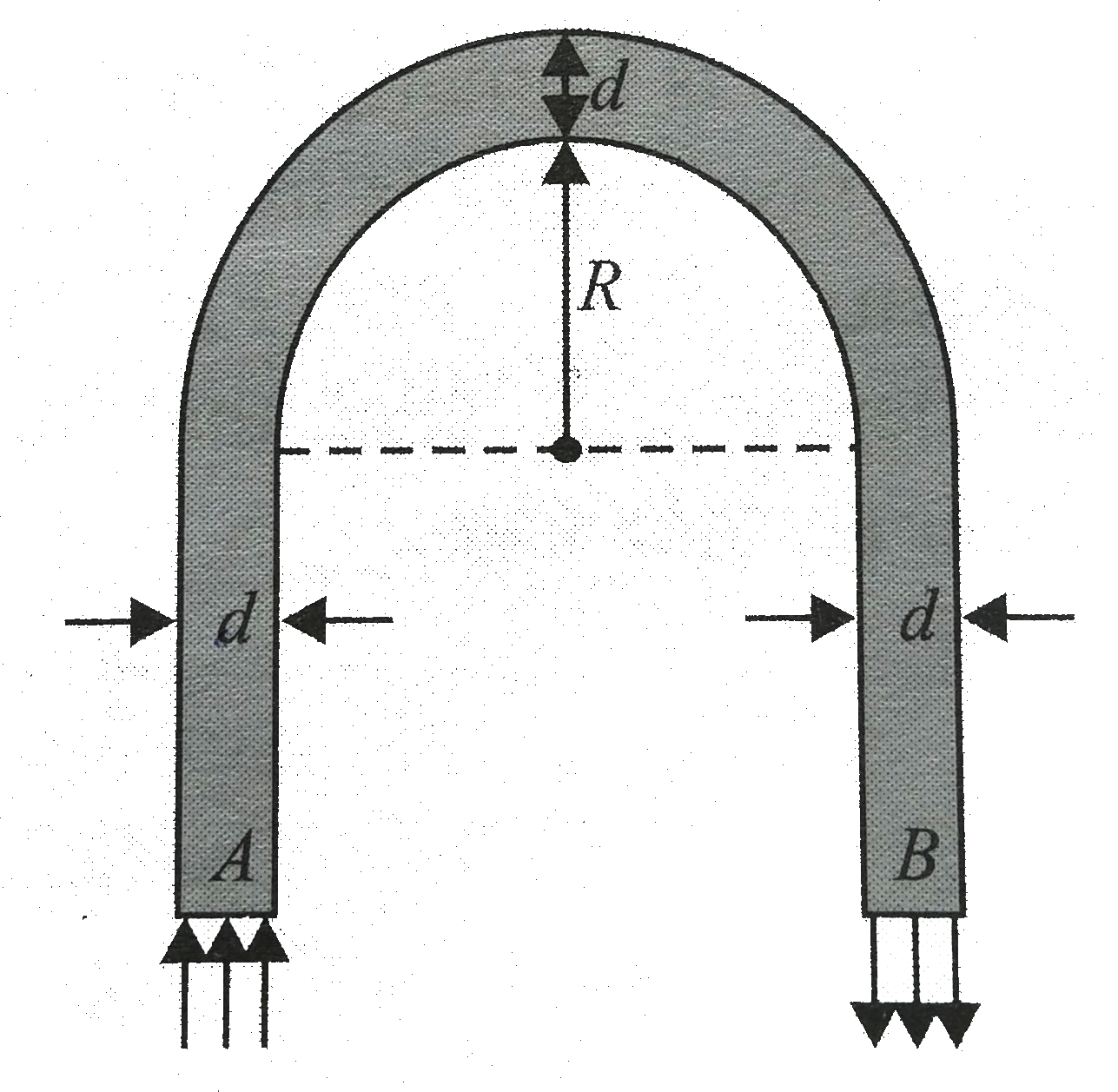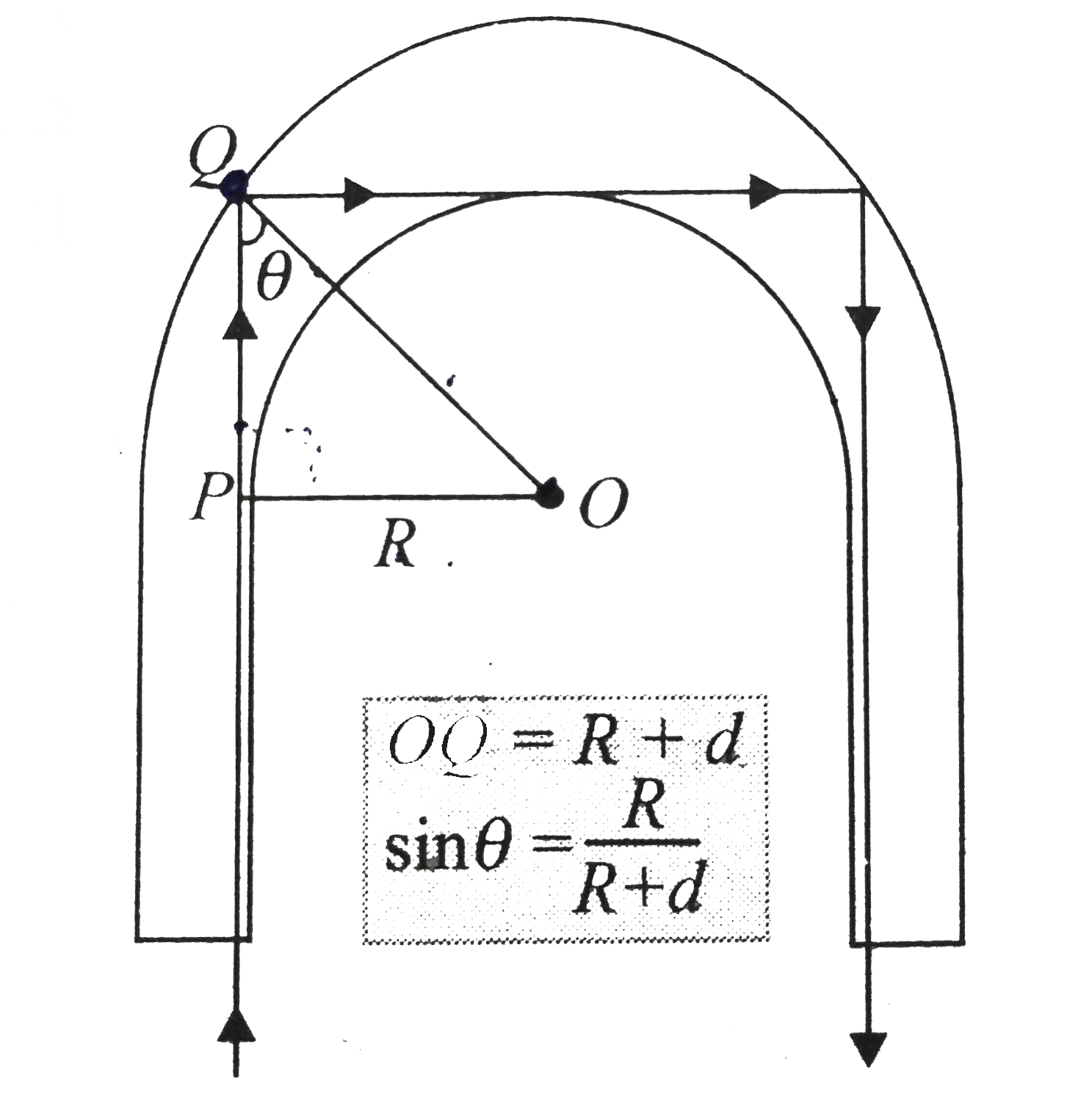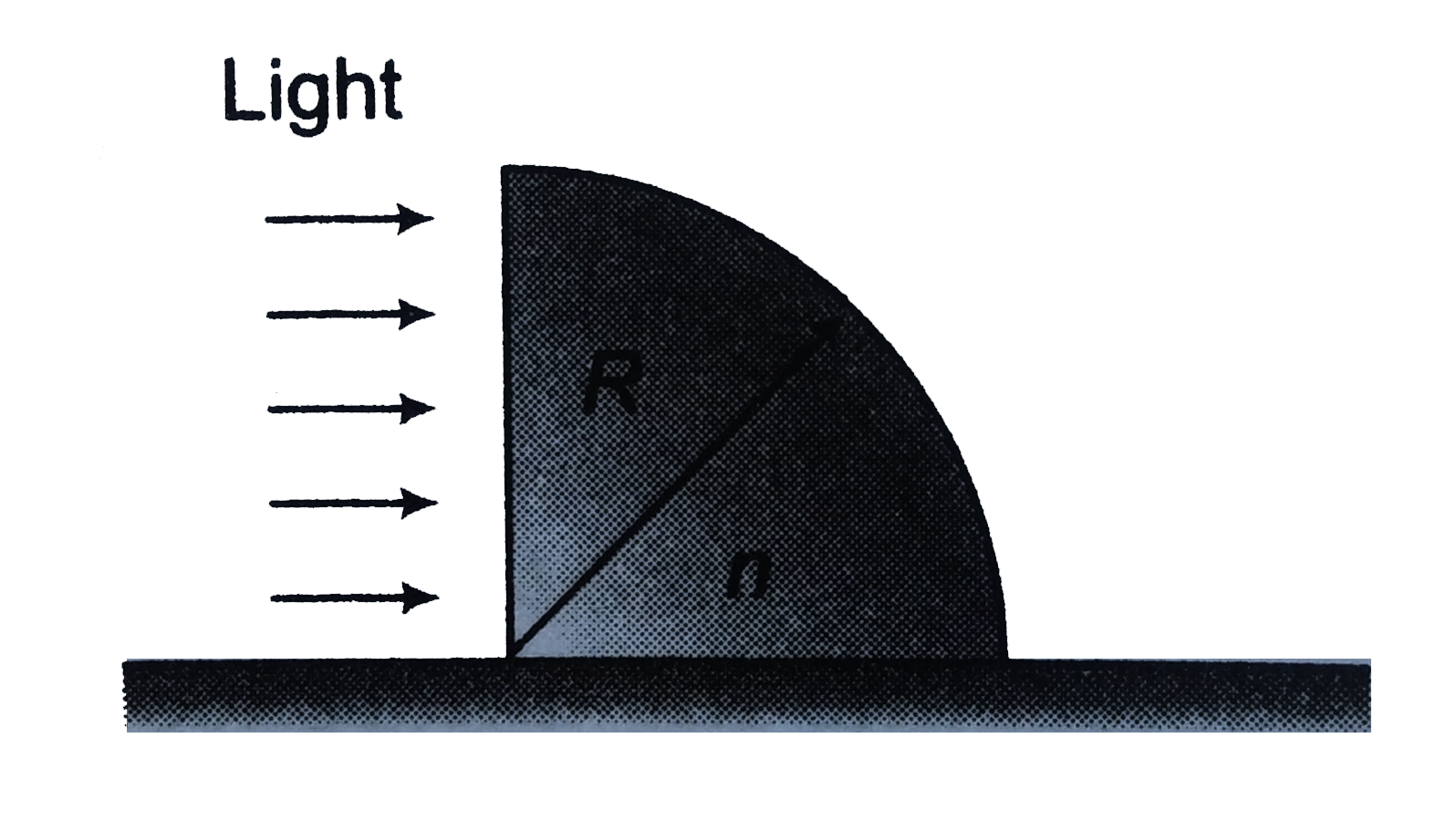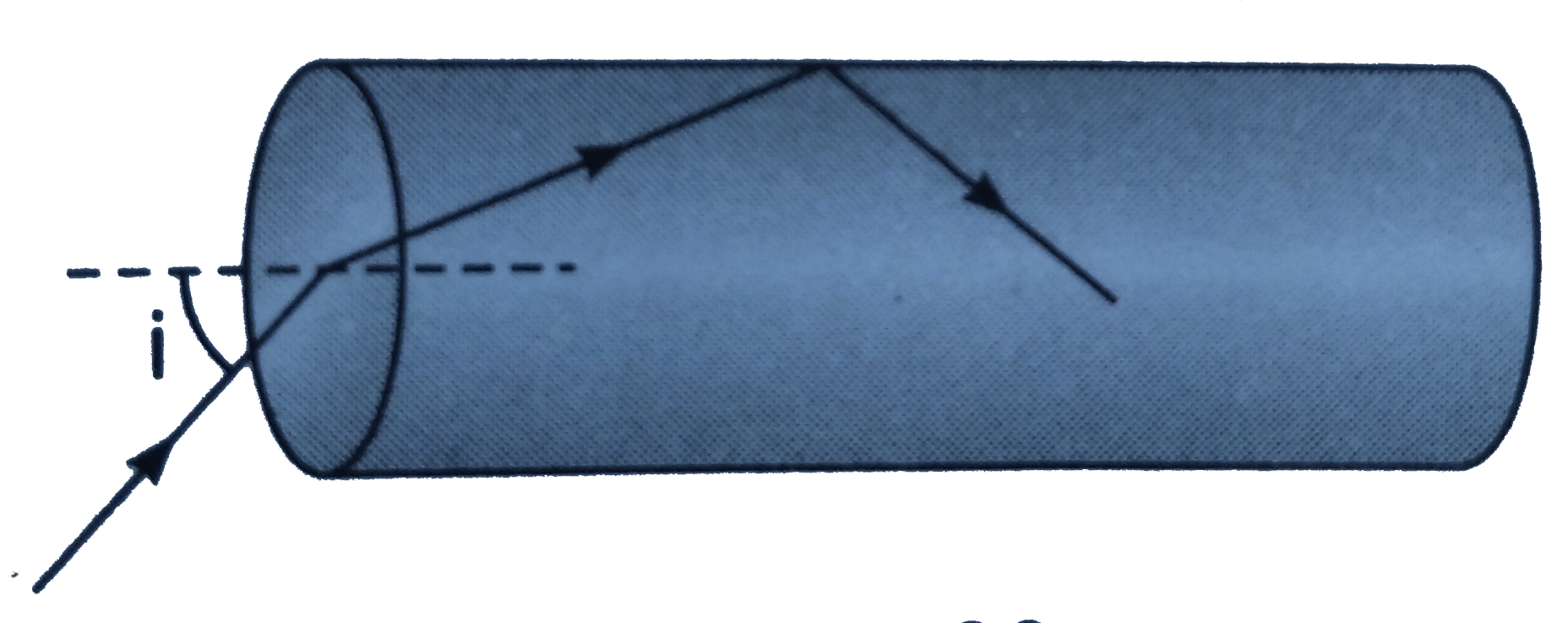A glass rod having square cross-section is bent into the shape as shown in the figure. The radius of the inner semi-circle is R and width of the rod is d. Find the minimum value of d/R so that the light that enters at A will emerge at B. Refractive index of glass is μ=1.5

Consider the figure. If smallest angle of incidence θ is greater than critical angle then all light will emerge out at B.
⇒θ≥sin−1(1μ)⇒sinθ≥1μ
From figure, sinθ=RR+d
⇒RR+d≥1μ⇒(1+dR)≤μ
⇒dR≤μ−1⇒(dR)max=0.5

Topper's Solved these Questions
- BOOK - CENGAGE PHYSICS ENGLISHCHAPTER - GEOMETRICAL OPTICSEXERCISE - Solved Examples15videos
GEOMETRICAL OPTICS
- BOOK - CENGAGE PHYSICS ENGLISHCHAPTER - GEOMETRICAL OPTICSEXERCISE - Exercise1.114videos
GEOMETRICAL OPTICS
- BOOK - CENGAGE PHYSICS ENGLISHCHAPTER - ELECTRON,PHONTS,PHOTOELECTRIC EFFECT & X-RAYSEXERCISE - dpp 3.315videos
ELECTRON,PHONTS,PHOTOELECTRIC EFFECT & X-RAYS
- BOOK - CENGAGE PHYSICS ENGLISHCHAPTER - HEATING EFFECT OF CURRENTEXERCISE - Thermal Power in Resistance Connected in Circuit27videos
HEATING EFFECT OF CURRENT
Similar Questions
A rod of glass (μ=1.5) and of square cross section is bent into the shape shown in the figure. A parallel beam of light falls on the plane flat surface A as shown in the figure. If d is the width of a side and R is the radius of circular arc then for what maximum value of dR light entering the glass slab through surface A emerges from the glass through B
 View Solution
View SolutionThe weight of an object on the surface of the Earth is 40 N. Its weight at a height equal to the radius of the Earth is
View SolutionAn object is at a distance of d=2.5cm from the surface of a glass sphere with a radius R=10cm. Find the position of the final image produced by the sphere. The refractive index of glass is μ=1.5.
View SolutionA glass sphere of refractive index 1.5 forms the real image of object O at point I as shown in the figure when kept in air of refractive index 1. If the value of x is kR. Find k
View SolutionA glass prism in the shape of a quarter cylinder lies on a horizontal table. A uniform, horizontal light beam falls on its vertical plane surface as shown in the figure. If the radius of the cylinder is R=5cm and the refractive index of the glass is n=1.5, where on the table beyond the cylinder, will a path of light be found?
 View Solution
View SolutionLight is incident at an angle i on one planer end of a transparent cylinderical rod of refractive index μ. Find the least value of μ so that the light entering the rod does not emerge from the curved surface of the rod irrespective of the value of i.
 View Solution
View SolutionA cylindrical rod of length l and cross - sectional radius r is placed at a distance of 50 r from a infrared point source S of power 1.25 kw as shown in the figure. The lateral surface of the rod is perfectly insulated from the surroundings . If the cross - section A absorbs 80 % of the incident energy and the temperature difference between the ends of the rod is constant , then the rate of heat flow through the rod in steady state is
 View Solution
View SolutionA slab of glass, of thickness 6 cm and refractive index μ=1.5 is placed in front of a concave mirror as shown in the figure. If the radius of curvature of the mirror is 40 cm and the reflected image coincides with the object, then the distance of the object from the mirror is
 View Solution
View SolutionThere is a spherical glass ball of refractive index μ1 and another glass ball of refractive index μ2 inside as shown in figure . The radius of the outer ball is R1 and that of inner ball is R2. A ray is incident on outer surface of the ball at an angle i1,
_S01_064_Q01.png)
Find the value of r1View SolutionThere is a spherical glass ball of refractive index μ1 and another glass ball of refractive index μ2 inside as shown in figure . The radius of the outer ball is R1 and that of inner ball is R2. A ray is incident on outer surface of the ball at an angle i1,
_S01_066_Q01.png)
Find the value of r2View Solution

